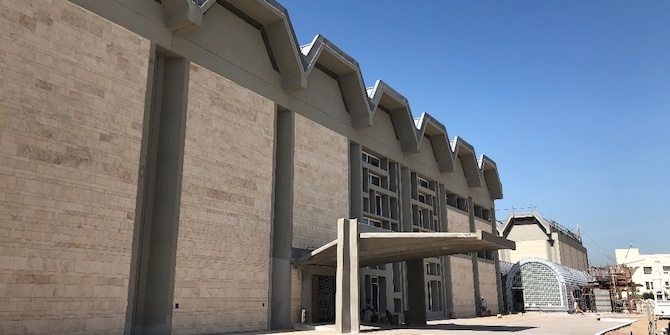by Bibi Alajmi

Knowledge-Based Economy (KBE) is a global buzzword among world leaders and policymakers. A KBE utilises knowledge to drive economic growth and development. It is an economy in which the knowledge acquisition, creation, and dissemination of knowledge are the primary processes for economic growth. Successful transition to the KBE entails effective investment in education, building a robust innovation capability, modernising the information technology infrastructure, and having an economic environment conducive to maximising development advantages. The World Bank has termed these elements as the four pillars of the KBE, and together they constitute the KBE framework. The KBE framework asserts that investments in the four KBE pillars are necessary for sustained creation, adoption, adaptation, and use of knowledge in domestic economic production, which will result in higher value-added goods and services.
The Gulf economies, which are relatively better compared to those of the Arab countries, received a “good” Knowledge Economy Index (KEI) score. This improvement in KEI score was a result of GCC countries’ economic diversification efforts. The macroeconomic environment and institutions have the highest scores in the KEI, which is the result of the countries’ stable macroeconomic environments and the robust institutional framework that supports the flow of new or existing knowledge. However, although GCC countries have made substantial progress toward creating a KBE, crucial areas such as education and innovation must be strengthened to further enhance knowledge activities. Indeed, even though countries such as Saudi Arabia, Qatar, and United Arab Emirates (UAE) have made progress in supporting education, scientific research, and the adoption of innovation and creativity, they continue to perform below expectations for their level of development (see table below).
Global Innovation Index for GCC
| 2019 | 2020 | 2021 | Rank among HIE (N=51) | Rank among NAWAE (N=19) | |||||||||
|---|---|---|---|---|---|---|---|---|---|---|---|---|---|
| Innovation Input | Innovation Output | GII N=132 | Innovation Input | Innovation Output | GII N=132 | Innovation Input | Innovation Output | GII N=132 | |||||
| Kuwait | 75 | 56 | 60 | 73 | 79 | 78 | 73 | 73 | 72 | 46 | 10 | ||
| Oman | 57 | 101 | 80 | 68 | 109 | 84 | 67 | 90 | 76 | 47 | 11 | ||
| Saudi Arabia | 49 | 85 | 68 | 50 | 77 | 66 | 59 | 72 | 66 | 44 | 6 | ||
| Qatar | 43 | 70 | 65 | 64 | 72 | 70 | 64 | 70 | 68 | 45 | 7 | ||
| Bahrain | 69 | 87 | 78 | 63 | 89 | 79 | 63 | 99 | 78 | 48 | 13 | ||
| UAE | 24 | 58 | 36 | 22 | 55 | 34 | 23 | 47 | 33 | 32 | 3 | ||
This blog is an introduction to an ongoing research project that seeks to develop a methodology for assessing innovation capabilities and investigating the role of education institutions in supporting and facilitating the KBE transition process. The project consists of multiple phases, the first to be produced to focus on reviewing Kuwait’s innovation capabilities based on several innovation indices. For the purpose of this article, we shall focus on reviewing the GII, an index published by the World Intellectual Property Organization (WIPO), a specialised agency of the United Nations, and providing recommendations for future improvement.
The Global Innovation Index (GII) ranks world economies according to their innovation capabilities. Consisting of roughly 80 indicators grouped into innovation inputs and outputs, the GII aims to capture the multidimensional facets of innovation. The overall GII ranking is based on two equally important subindices in presenting a complete picture of innovation: the innovation input subindex and the innovation output subindex.
Based on the GII report of 2021, Kuwait performed below the high-income group average in all GII pillars. However, Kuwait performed above the regional average in two pillars: infrastructure and knowledge and technology outputs. Kuwait innovation input and output were equal. Kuwait ranked 73rd in innovation inputs in 2021, the same as 2020, but higher than in 2019. As for innovation output, Kuwait ranked 73rd. Relative to GDP, Kuwait’s performance is below expectations for its level of development. Kuwait performs best in infrastructure, and its weakest performance is in business sophistication (score 18.7, rank 100th), specifically in knowledge workers (score 17.4, rank 105th) and knowledge absorption (intellectual property payment, high-tech imports, and ICT services imports; score 13.7, rank 124th).
The purpose of this blog was to provide a snapshot of the status of Kuwait innovation capabilities based on data adopted from the GII. And although Kuwait has scored high in many of the KEI indicators, as well as in GII measures, they continue to struggle in the field of innovation.
These findings confirm that Kuwait government must take serious steps and make significant efforts to develop innovation to assist in finding solutions for the diversifying of the economy and shift into the KBE. Kuwait must develop an education reform where business development and risk-taking toward innovation are the key components of their curriculum. The education reform should assist students to create entrepreneurship projects and engage in creating innovation outputs to directly influence the economic status of the country, diversifying it. The education system should be geared toward producing “knowledge workers”.
At the innovation level, Kuwait is required to modify its strategies and policies to prioritise investment in human capital. Human capital has proven to be not only a factor of production and a determinant of productivitybut also the main influence in all components of development and the main measure of the wealth of nations.
In addition, the R&D sector must shift its focus from merely developing research to implementing research findings in a manner that benefits society, investigating and measuring the outcomes of these investments. To prosper in a competitive environment, the R&D sector must build a mechanism that offers knowledge and insights that contribute to the improvement of existing processes and measures and communicates future development.
هذا المقال متوفر باللغة العربية هنا







1 Comments